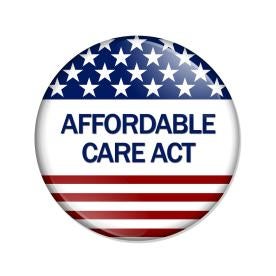On January 20, 2017, President Donald J. Trump signed an Executive Order instructing federal agencies to work to “minimize the unwarranted economic and regulatory burdens” of the Affordable Care Act (“ACA”), and to increase the flexibility provided to States to run healthcare programs. While the Executive Order itself does not change any regulation or specific ACA-implementing policy, it sends a signal that the Trump Administration intends to use executive authority to roll back parts of the ACA and increase State flexibility.
Provisions Regarding the ACA
The key provisions of the Executive Order read:
Section 1. It is the policy of my Administration to seek the prompt repeal of the Patient Protection and Affordable Care Act (Public Law 111-148), as amended (the “Act”). In the meantime, pending such repeal, it is imperative for the executive branch to ensure that the law is being efficiently implemented, take all actions consistent with law to minimize the unwarranted economic and regulatory burdens of the Act, and prepare to afford the States more flexibility and control to create a more free and open healthcare market.
Sec. 2. To the maximum extent permitted by law, the Secretary of Health and Human Services (Secretary) and the heads of all other executive departments and agencies (agencies) with authorities and responsibilities under the Act shall exercise all authority and discretion available to them to waive, defer, grant exemptions from, or delay the implementation of any provision or requirement of the Act that would impose a fiscal burden on any State or a cost, fee, tax, penalty, or regulatory burden on individuals, families, healthcare providers, health insurers, patients, recipients of healthcare services, purchasers of health insurance, or makers of medical devices, products, or medications.
The Order itself does not change the ACA or its implementing regulations. To the contrary, the Order recognizes that “carrying out the directives in this order” may require agencies to go through the rulemaking process, and it instructs all federal agencies to “comply with the Administrative Procedure Act and other applicable statutes in considering or promulgating such regulatory revisions.”
However, the Order sends a signal that the Trump Administration intends to use executive authority to roll back parts of the ACA, “[t]o the maximum extent permitted by law,” regardless of when and whether Congress enacts legislation to repeal and replace the ACA.
The Trump Administration has the authority to make significant changes to the regulations implementing the ACA through notice-and-comment rulemaking. CMS can change anything in current regulations that is not expressly set out in the statute (e.g., the definition of Essential Health Benefits).
But the scope of President Trump’s authority to delay or decline to enforce requirements expressly included in the statute is an open question. President Obama chose not to enforce the employer mandate and chose to allow individuals to remain enrolled in non-grandfathered, non-compliant individual market plans, even though both actions were inconsistent with the statutory text. Similarly, President Trump may choose not to enforce any number of provisions of the ACA. For example, in any interview on Sunday, January 22, White House Senior Advisor Kellyanne Conway stated that the Trump Administration “may” stop enforcing the individual mandate. In addition, the Executive Order expressly mentions “makers of medical devices,” which has led to some speculation in the press about whether the Trump Administration intends to not enforce the ACA’s medical device tax. Like the individual mandate, the medical device tax is required by the statutory text of the ACA, and thus cannot be repealed through executive action. It is possible, however, that the Trump Administration may look to find a way to ease the burden of tax through executive action. In December 2015, Congress imposed a two-year moratorium on collection of the medical device tax, but that moratorium expires at the end of this year (December 31, 2017). Just as President Obama’s decision to decline to enforce the employer mandate and other statutory requirements was legally questionable, any move by President Trump to decline to enforce the individual mandate or the medical device tax (or anything else expressly required by statute) is vulnerable to legal challenge.
Another important question is whether the Trump Administration will cease making cost sharing subsidy payments to insurers. In U.S. House of Representatives v. Burwell, 14-1967 (D.D.C.), the U.S. District Court for the District of Columbia agreed with House Republicans that President Obama lacked the authority to pay cost sharing subsidies because there was no specific appropriation to do so. The court stayed its ruling while the government appeals to the D.C. Circuit, where the case is now pending. The Trump Administration could agree with the House of Representatives and the court that the cost sharing subsidies are illegal and decline to continue to make those payments.
Finally, it is also important to note that the Trump Administration could use Center for Medicare and Medicaid Innovation (“CMMI”) demonstrations – authorized by ACA § 3021, Social Security Act § 1115A – or Section 1332 State Innovation Waivers to “waive” or “grant exemptions from” any number of provisions of the ACA.
All that said, it is not clear exactly what the Trump Administration actually intends to do with respect to the ACA. As Senator Susan Collins (R-ME said earlier today, “the executive order [is] very confusing . . . Until there’s a secretary in place who can interpret the regulations or do the rulemaking to rescind regulations, it’s very difficult to say what the impact of the executive order is going to be.” Further, making major changes to the ACA – such as declining to make cost sharing subsidy payments or declining to enforce the individual mandate – could create significant disruption in the state insurance markets, cause premiums to rise, and/or lead to litigation. Given this reality, is not clear the extent to which the Trump Administration will roll back provisions of the ACA before the statute itself is repealed and replaced, and it is not clear how much political capital the Trump Administration is willing to spend on this effort.
Provision Regarding State Flexibility
The Executive Order also includes another important provision regarding state flexibility, which did not receive as much press attention. Specifically, President Trump ordered the following:
Sec. 3. To the maximum extent permitted by law, the Secretary and the heads of all other executive departments and agencies with authorities and responsibilities under the [ACA], shall exercise all authority and discretion available to them to provide greater flexibility to States and cooperate with them in implementing healthcare programs.
This state flexibility provision does not change any regulations or policies. Further, it is not clear what it means by “healthcare programs,” i.e., it is not clear whether this term cover Medicaid; the Children’s Health Insurance Program (“CHIP”); Section 1115 demonstrations; Section 1332 waivers; and/or state regulation of health insurance markets.







 i
i


